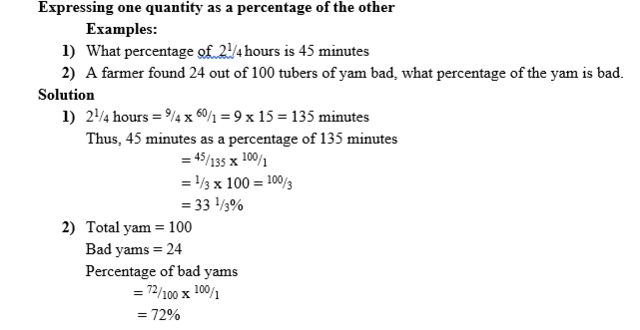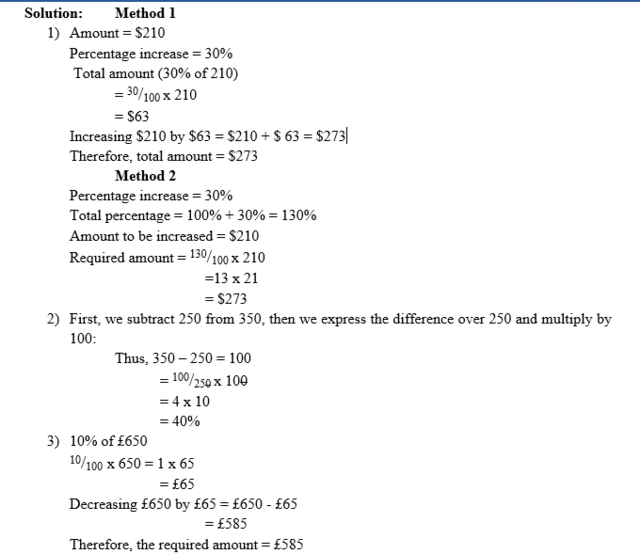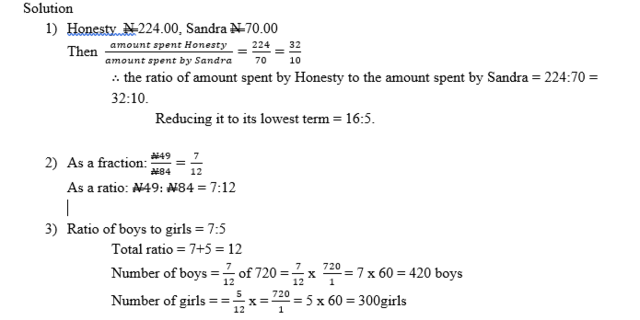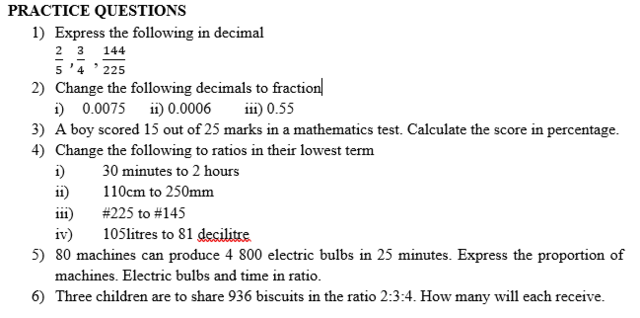There are two methods of doing this conversion. There is the general method which can be used any time and on any type of vulgar fraction. There is also another method where the denominator of the fraction contains power/powers of ten.
In this second case, the given fraction can first be converted to an equivalent fraction.
Examples :

Teacher to demonstrate this approach to students as an alternative.
Conversion of decimals to fractions.
Examples:
Solution:
To do this, we simply multiply the given decimal fraction by 100 and at the same time divide it by 100.




Percentage increase and decrease
Percentage increase represents a rise or appreciation of a given number, amount or quantity while Percentage decrease represents a reduction or depreciation of a given number, amount or quantity. It is the opposite of percentage increase.
Example:



RATIO
Ratio compares two or more quantities or amounts of the same kind. It can be expressed as a fraction, e.g. 2:3 = 2/3. It can be expressed in its simplest or lowest term by cancelling, and it does not contain a fraction or decimal in its lowest term. In other words, Ratio is a type of measure of the relative size of two or more quantities expressed as a proportion
Example:

Class Activity

Proportion
This is the relation of one part to another or to the whole with respect to quantity
There are two types which is Direct and Inverse Proportion.
When a quantity increases in relation to another quantity is Direct Proportion. On the other hand, an increase in a quantity in relation to a decrease in another quantity (or vice-versa) is called Indirect Proportion.
Example:
Solution



Read our disclaimer.
AD: Take Free online baptism course: Preachi.com 